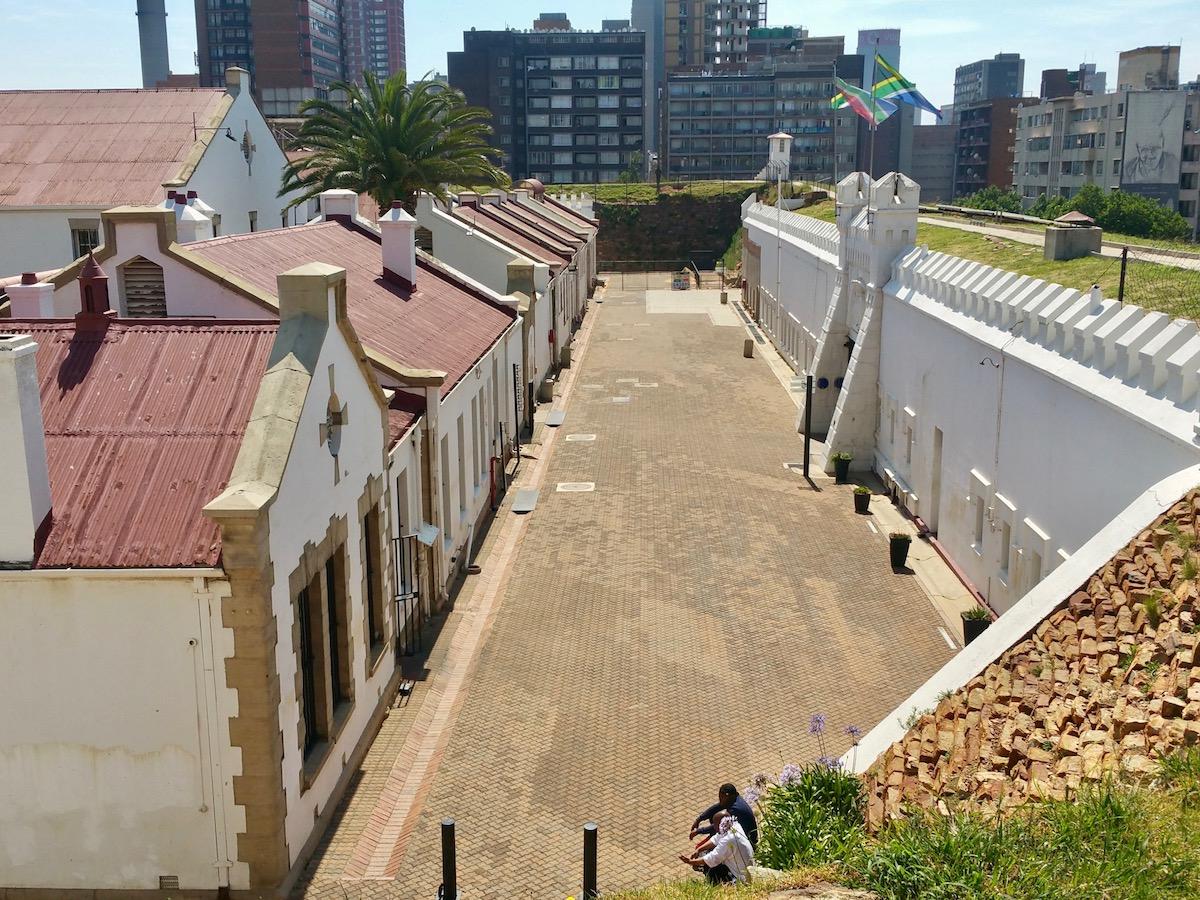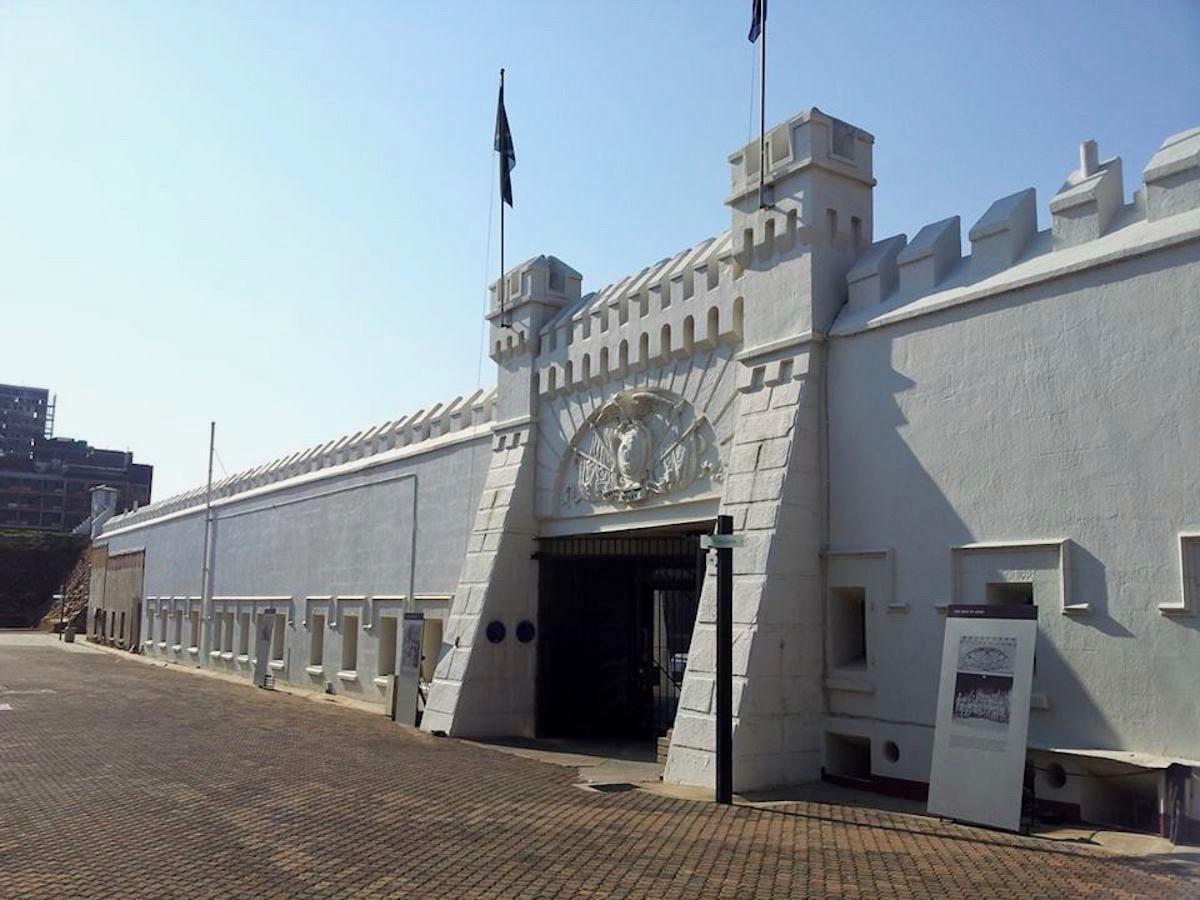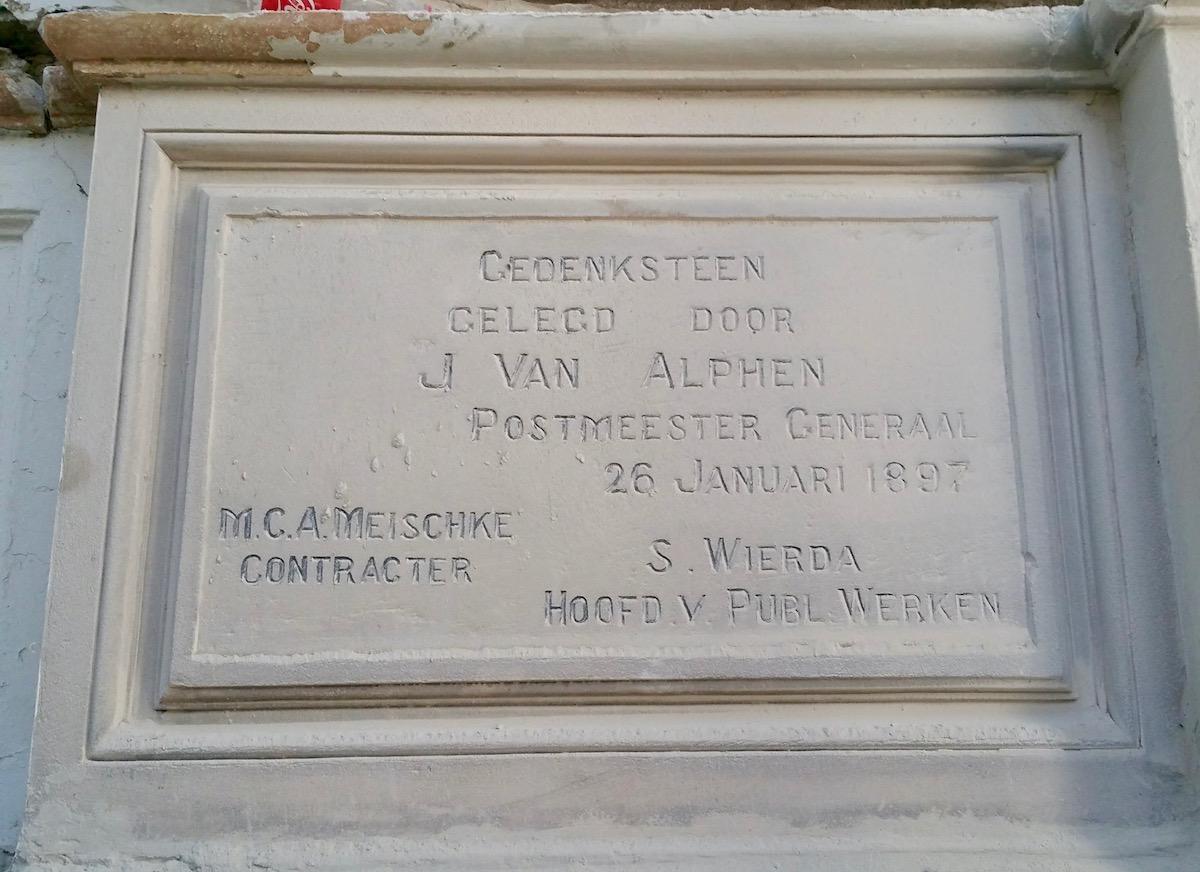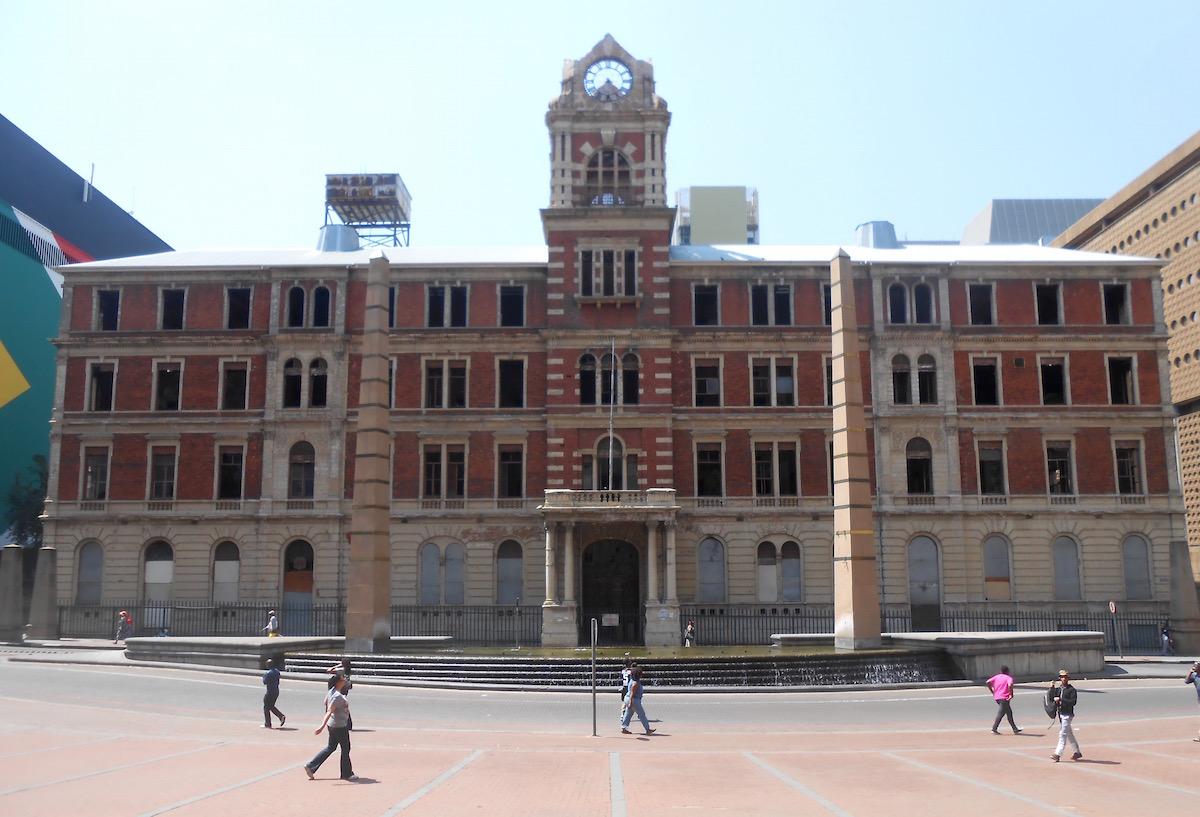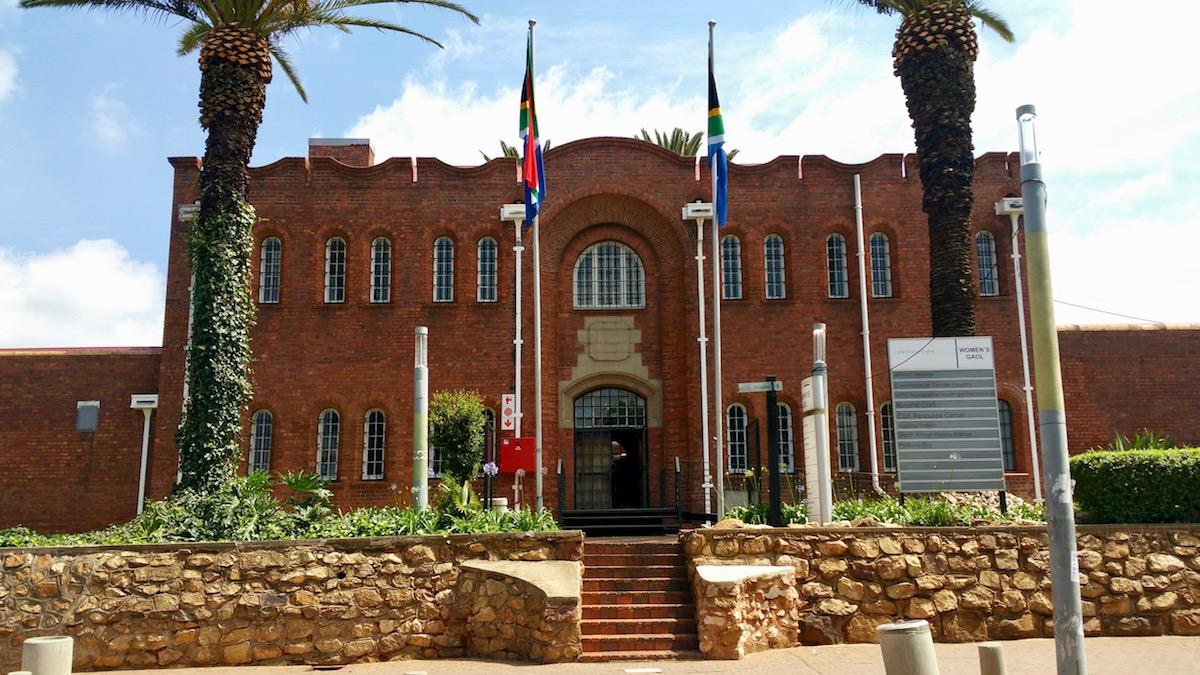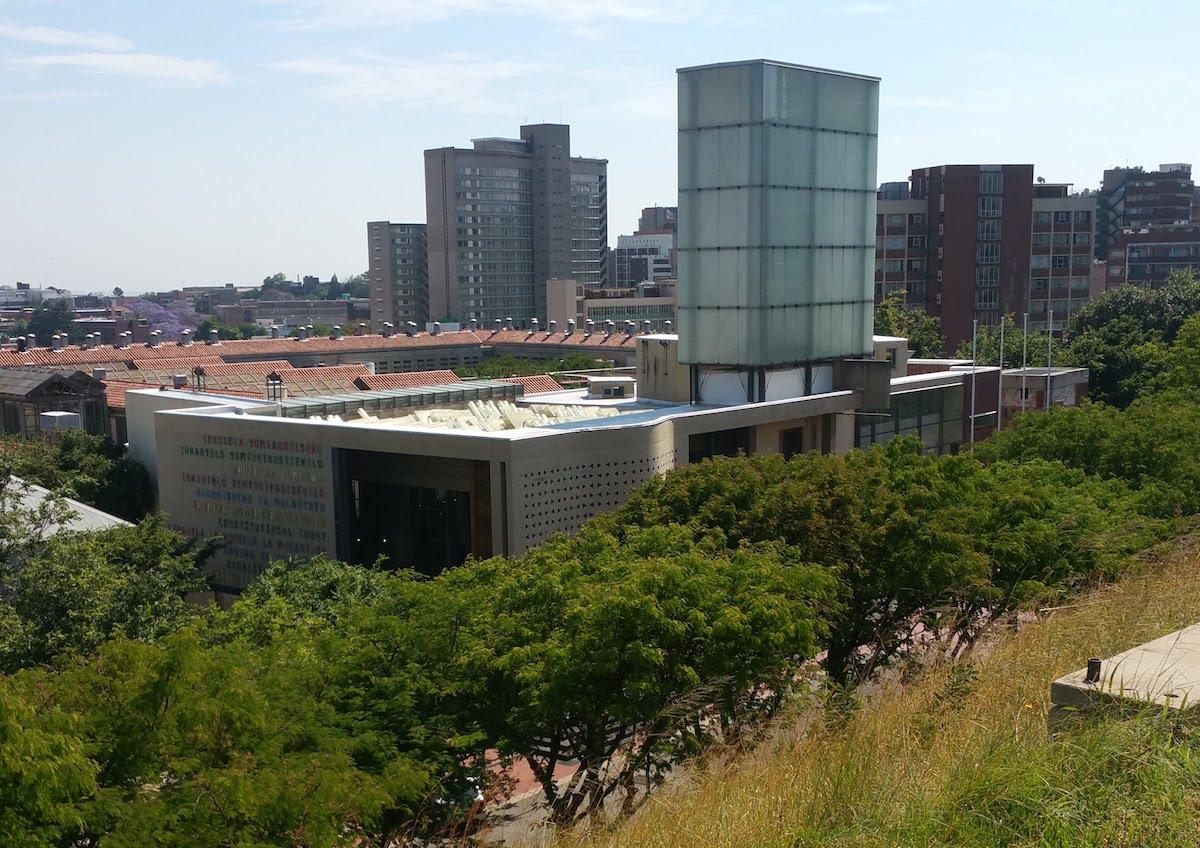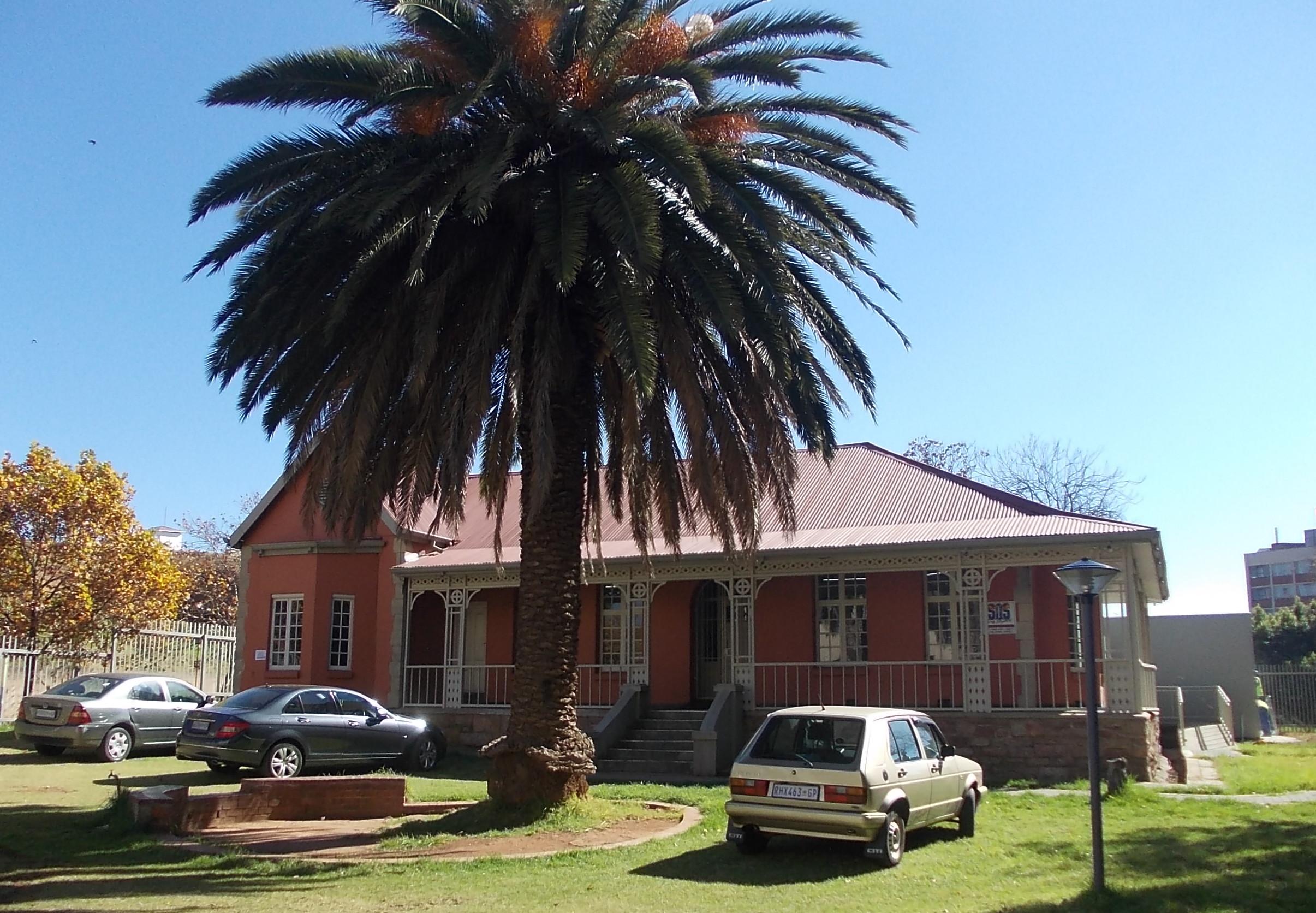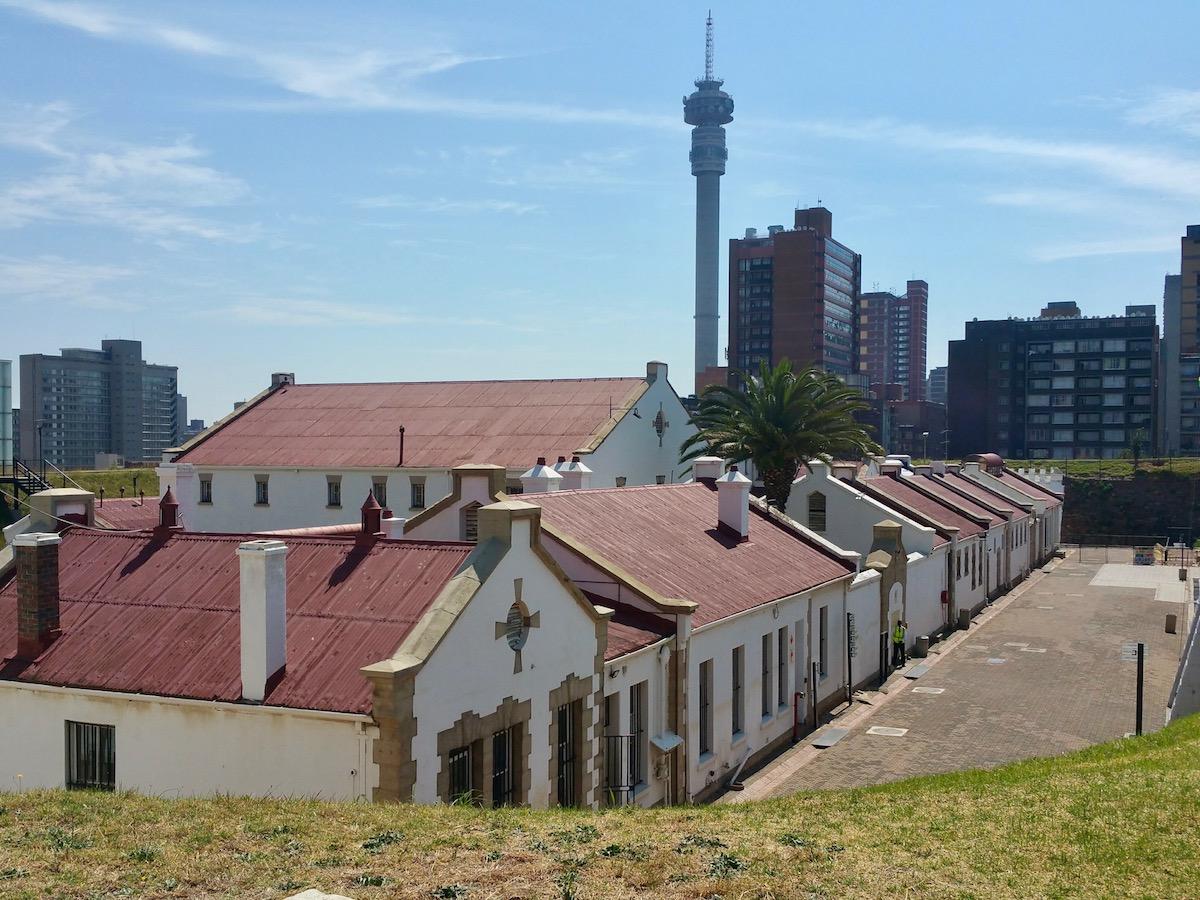
Disclaimer: Any views expressed by individuals and organisations are their own and do not in any way represent the views of The Heritage Portal. If you find any mistakes or historical inaccuracies, please contact the editor.
In the article below, journalist Lucille Davie reveals the rich history of the Old Fort and describes the restoration efforts of 2007/8. The article was first published on the City of Joburg's website on 24 January 2008. She also explores the old tunnels which will fascinate many a reader. Click here to view more of Davie's writing.
The Constitutional Court has been built, No 4 prison and the Women’s Jail have both been restored. Now it’s the turn of the Johannesburg Fort.
Work began in June last year, and will see the old prison, the ramparts, the tunnels, and the governor’s house across the road being given a long-overdue facelift. In all some R11-million is being spent on the restoration, overseen by the Johannesburg Development Agency (JDA).
The history of the site goes back to 1893, when Transvaal President Paul Kruger built a prison on the brow. Three years later, in 1896, after the botched Jameson Raid, Kruger converted the prison into a fort, carving ramparts from the ridge to form the Fort.
Old Fort from above (The Heritage Portal)
Entrance to the Old Fort (The Heritage Portal)
A Howitzer was positioned facing the town, a menacing reminder to the Uitlanders that Kruger wasn't happy with them in his republic, while another smaller Howitzer faced Pretoria, to defend the rapidly growing town. “The Fort was designed to control Johannesburg, not to defend it,” says Flo Bird, chairperson of the Parktown & Westcliff Heritage Trust [now the Johannesburg Heritage Foundation].
The reach of the Howitzer was extensive - it would take out the mines on the southern side of the town, but also as far as Roodepoort in the west and Germiston in the east, say Bird.
The fort was completed in 1899, shortly before the Anglo-Boer or South African War was declared in October of that year. Boers were called up to fight in the war, and the fort was manned by the ZARP, the Zuid Afrikaansche Republiek Polisie force. In May 1900 the British marched into Johannesburg and the fort was handed over to them.
Until the end of the war in 1902 the fort served as both a jail and a military base.
The fort, described by explorer Henry Stanley as “a large and ugly earthwork”, was constructed on the plan of Adolf Schiel, who was chief of prisons. It was overseen by Dutch architect Sytze Wierda, who also designed the Rissik Street Post Office and many of the official buildings in Pretoria.
Although the fort never saw any action, three men were executed at the fort, the most prominent being Cornelis Broeksma, an attorney from Holland who exposed the appalling conditions at the concentration camps. He was executed and buried at the fort, along with the other two. All three were later exhumed and reburied at Braamfontein Cemetery.
Rissik Street Post Office Foundation Stone (The Heritage Portal)
Rissik Street Post Office (The Heritage Portal)
Fort becomes a prison again
In 1904, a "native" prison, No 4, was built. In 1906 the Fort once again became a prison. These prisons were to become apartheid's most despicable places of incarceration, locking behind their walls two of the 20th century's most dignified freedom fighters: Mahatma Gandhi and Nelson Mandela.
The Fort was used to jail white prisoners, while No 4 remained the prison for black male prisoners, used for common criminals and pass offenders, subjecting these men to the most dreadful, inhumane conditions. In 1910 the Women's Jail was built, and while it housed common criminals like murderer Daisy de Melker, in the apartheid years it subjected many women to its dehumanising treatment, including Winnie Madikizela-Mandela and Albertina Sisulu.
Women's Jail (The Heritage Portal)
In 1928 the awaiting-trial block was built. This has subsequently been demolished, except for four stairwell towers, to make way for the Constitutional Court. Bricks from the block were used in the construction of the court.
In 1983 the prison complex was closed, and over the next decade it became home to squatters, until in 1996 it was chosen as the location for the country's Constitutional Court, which was opened in 2004. At the same time No 4 was opened as a heritage site, as was the Women's Jail.
Constitutional Court (The Heritage Portal)
Emphasis on military history
Whereas previously the emphasis had been on rehabilitating the prison, the emphasis on this restoration will be on the military history of the site, says Lebowa Letsoalo, development manager at the JDA. “We would like to give visitors the experience of the military fort.”
This will involve paving the ramparts and possibly replacing the Howitzers. “We would love to put back the guns,” says Letsoalo, “it depends on our financial constraints.”
The walkway will go all the way around, with a bridge across the road on the north-west corner of the ramparts. “This will give visitors a 360º degree view from the ramparts,” says Letsoalo. There will be wheelchair access too, by means of a lift.
The guns at the fort were never fired in battle, except to announce the start of the war on 10 October 1899; and when the British occupied the Fort, a shot rang out daily to signal 1 o’clock. The howitzer in the south-west corner was reached by means of a staircase, which is no longer visible. When the British left the fort in 1906 the large Howitzer was sent to Ladysmith in KwaZulu-Natal where it still stands outside the town hall with another howitzer.
The beautiful sandstone edgings of the fort building are now being uncovered and restored. The surrounding walls were originally a rich red brick but they have been painted over. This has damaged them, so the restorers, Boltson’s, have opted to give them another white coat.
The exercise yards of the fort will remain largely as they are, while the cells will remain intact.
The tunnels
Under the eastern ramparts is a series of tunnels, used primarily as an armoury when the site was still a fort.
The tunnels, all running northwards, are around 1m in width and 2,5m tall, with graceful arched shapes. They end in a number of store rooms with thin steel beams visible in the ceiling. A second tunnel lies beneath these tunnels, accessible from a large wooden trapdoor. This tunnel is much taller, at 4m, and runs downwards, ending in a tall room, a magazine.
Although slightly dank, the tunnels are not damp, which attests to the expertise of their construction. Despite the age of the tunnels, there are no cracks in the walls.
The tunnels were always lit with electricity, for fear of lamps or candles setting off an explosion.
There was accommodation in the fort for around 100 men, initially soldiers and officers, then prison warders and officials. Large rooms off the tunnels in the eastern ramparts, and rooms cut into the western rampart, provided this accommodation. Similar tunnels were cut into this rampart.
One of the rooms in the tunnels has hooks hanging from a bar along the ceiling. This room was the cold room, where meat was hung from the hooks. Bird emphasises that prisoners were never kept in the tunnel rooms.
Discreet lighting is now being run along the walls of the eastern tunnels, which will be open for tours from March, when the work will be completed [update: the rooms remain closed to the public]. The rooms in the western rampart are also being restored.
Another tunnel, running from Constitution Square outside the court to outside the recreation centre across the road, was used to move prisoners from the prison to the nearby Magistrate’s Courts in Sam Hancock Street. This tunnel will not be restored but will be kept locked, with its entrance near the courts demarcated by a gate and notice board.
Courtyard
The courtyard below the northern rampart has been restored. The original building that stood in the courtyard has been uncovered and its footprint has been traced in different colour bricks.
It appears there were barracks in the courtyard, built in the early 1900s, when the building was still a fort. In the 1940s and 50s this building was converted into cells, possibly for mentally unstable prisoners. In the 1980s, after the prison was closed down, the Rand Light Infantry moved in, and requiring the courtyard for a parade ground, the buildings were demolished.
During excavations, a round shape was uncovered, thought to be where a large palm tree grew, now transplanted to one of the inner exercise yards, says Bird.
The staircase up to the northern rampart will be positioned in the middle of the northern rampart. It is possible that the original staircase up to the Howitzer on the western rampart will be restored [update: this has not been undertaken].
Governor’s House and Hillbrow Recreation Centre
Beyond the eastern rampart, across Queen’s Road, is the Governor’s House and the Hillbrow Recreation Centre, previously the officers’ mess or club, which is probably 100 years old, estimated to have been built in 1908, according to a report by heritage consultant Herbert Prins. There is uncertainty as to the age of the house - two dates are given, either 1905 or 1911.
Though across the road from Constitution Hill, the community centre and the governor’s house are part of the hill. The house has been occupied by squatters for some years and is now in a derelict condition.
The single-storey house has a long front veranda, green iron roof and three well-established palm trees in its overgrown front garden. The house originally consisted of three lounges, a passage lobby, dining room, five bedrooms, two fireplaces and bay windows. Special features include a trough built into the west wall of one of the lounges, hipped ceilings, timber slatted ceilings and an attractive skylight in the hall. Sash windows have been replaced by metal ones.
Governor's House (Heritage Portal)
The officers’ mess consisted of a seniors’ lounge, a superintendent’s lounge, a reading room, two halls, a bar, a kitchen and scullery.
The town’s first women’s jail was built just north of the governor’s house, a building that was subsequently demolished.
“The Governor’s house is of cultural importance because it was closely associated with the functioning of the prison,” says Prins.
The officers’ mess was converted into the Hillbrow Community Centre with minimal changes. Changes to the building have been made over the years, but they have not altered the core structure, says Prins. The changes have been “compatible and not damaging to the historical, social and architectural values, inherent in the structure”.
“The entire Hillbrow Community Centre is culturally significant, by virtue of its historical connection with the community and because it is a good and comparatively rare example of a structure of its type built in Johannesburg in the early 20th century.”
Prins says that because the building played an important role in the history of the prison, providing for prison personnel, then later for the community, making it an important element of the area’s cultural history. But because there are no records prior to 1954, it is difficult to ascertain exactly what changes were made.
The house and recreation centre are to be restored at a cost of R7-million. The restoration work is expected to be completed by March this year.
Lucille Davie has for many years written about South Africa's people and places, as well as the country's history and heritage. Take a look at lucilledavie.co.za
Comments will load below. If for any reason none appear click here for some troubleshooting tips. If you would like to post a comment and need instructions click here.

